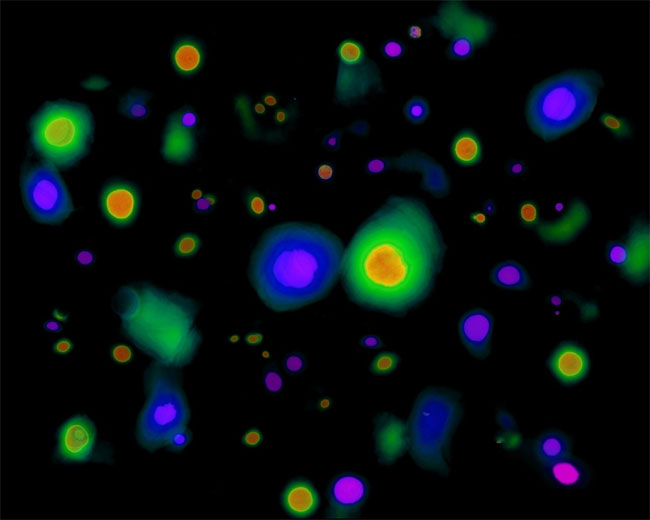
An enormous cold spot in our universe could be explained by a cosmic defect in the fabric of space-time created shortly after the Big Bang, scientists say.
If confirmed by future studies, the finding, detailed in the Oct. 25 issue of the journal Science, could provide cosmologists with a long-sought clue about how the infant universe evolved.
But other scientists, and even members of the study team, are skeptical of the new claim.
Cosmic ice cubes
Scientists think that shortly after the Big Bang, as the universe cooled and expanded, exotic particles transformed into the particles we know today via phase transitions similar to the gas-liquid-solid transitions that matter now experiences on Earth.
And like phase transitions on Earth, defects inevitably occur. When water crystallizes to ice, for example, cloudy spots appear in the ice that mark where water molecules are misaligned. Physicists predict that similar defects happened during the phase transitions of the early universe, and that the defects took different forms.
The team thinks a cold spot in the cosmic microwave background (CMB)—an energy artifact of the Big Bang that has been detected and mapped by NASA's Wilkinson Microwave Anisotopy Probe (WMAP) satellite—represents the most complex kind of cosmic defect, a 3-D blob-like structure called a texture.
Get the Space.com Newsletter
Breaking space news, the latest updates on rocket launches, skywatching events and more!
Marcos Cruz of the Instituto de Fisica de Cantabria in Spain and colleagues analyzed the CMB cold spot, which spans 1 billion light-years across, finding it had properties consistent with a texture.
"The cosmic microwave background is the most ancient image we have of the universe, and therefore it's one of the most valuable tools to understand the universe's origins," Cruz said. "If this spot is a texture, it would allow us to discriminate among different theories that have been proposed for how the universe evolved."
'Not compelling'
Other scientists say the team's case for a cosmic defect is still weak. "It would be spectacular, and a new handle on the early universe, if this cold spot turned out to be a texture as opposed to a random fluctuation, which is perhaps a more likely explanation," said Lyman Page, a WMAP team member at Princeton University who was not involved in the study.
Liliya Williams and Lawrence Rudnick, astronomers at the University of Minnesota, recently attributed the CMB cold spot not to a cosmic defect, but to an enormous "hole" in our galaxy, devoid of stars, gas and even dark matter, a mysterious substance thought to pervade the universe but which has so far eluded direct detection.
A "cosmic defect is an intriguing and plausible explanation. However, I don't think one can dismiss a void as the cause of the CMB cold spot," Williams said in an e-mail interview. "Whatever the correct interpretation will turn out to be, it is bound to open a new window on the early universe, but what we'll see through that window is still not clear."
Study team member Neil Turok of the University of Cambridge admits his team's case is "not at all compelling" at the moment. The cold spot could be a texture, but there is a 1 percent probability it is just a random temperature fluctuation in the CMB.
"What makes this so interesting is that there are a number of follow-up checks, which can now be done," Turok said. "So the texture hypothesis is actually very testable."
A cosmic texture would cause light passing through it to bend and point in certain ways that should be detectable by future space missions, Turok said.
- The Strangest Things in Space
- Greatest Mysteries: Where is the Rest of the Universe?
- You Can't Travel Back in Time, Scientists Say
Join our Space Forums to keep talking space on the latest missions, night sky and more! And if you have a news tip, correction or comment, let us know at: community@space.com.
Ker Than is a science writer and children's book author who joined Space.com as a Staff Writer from 2005 to 2007. Ker covered astronomy and human spaceflight while at Space.com, including space shuttle launches, and has authored three science books for kids about earthquakes, stars and black holes. Ker's work has also appeared in National Geographic, Nature News, New Scientist and Sky & Telescope, among others. He earned a bachelor's degree in biology from UC Irvine and a master's degree in science journalism from New York University. Ker is currently the Director of Science Communications at Stanford University.
